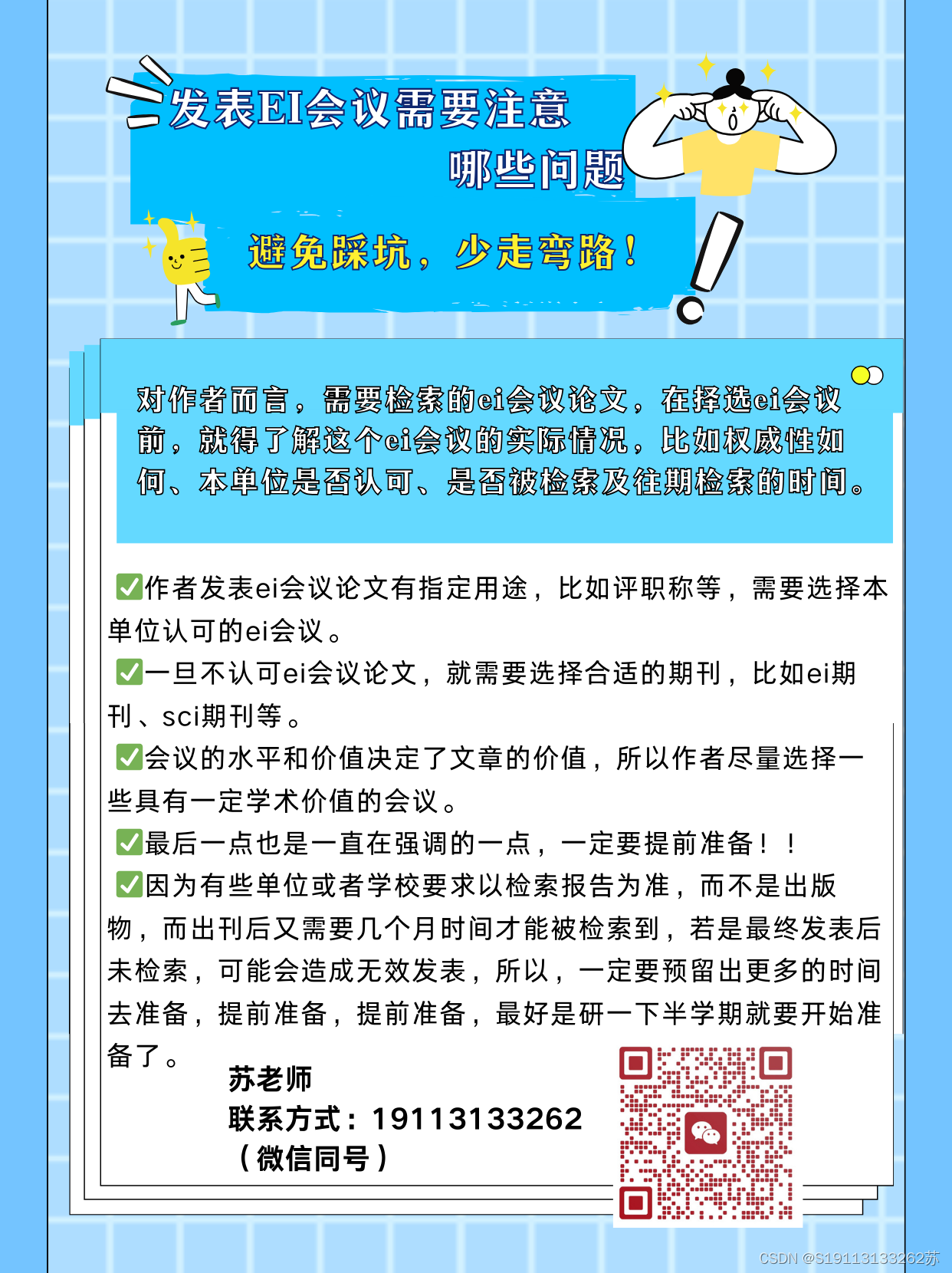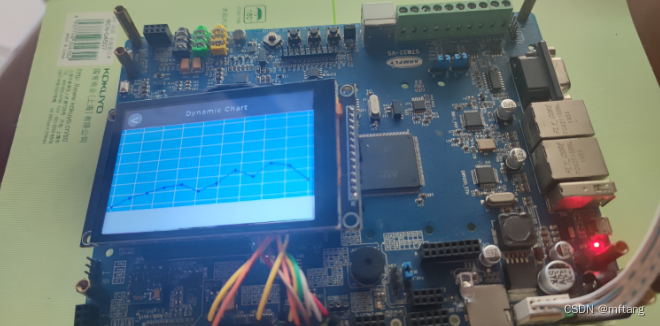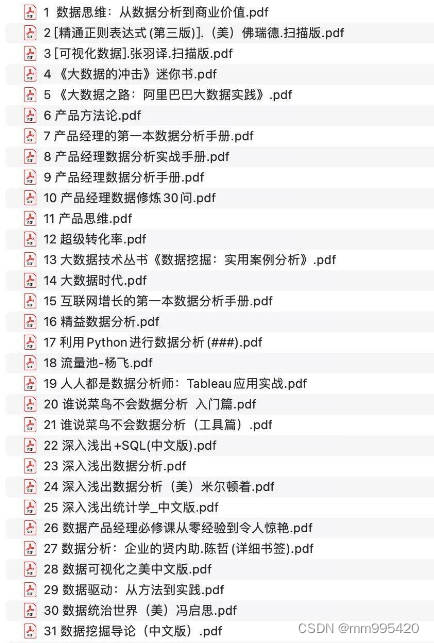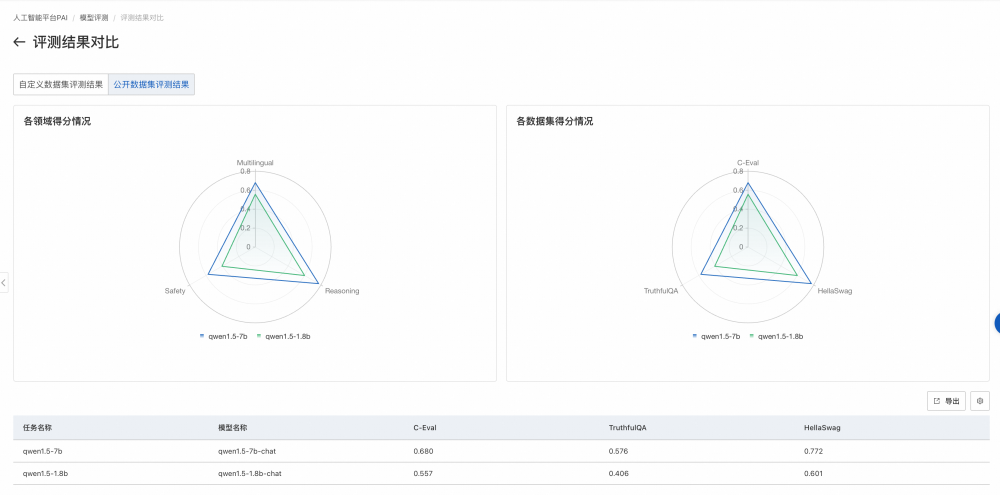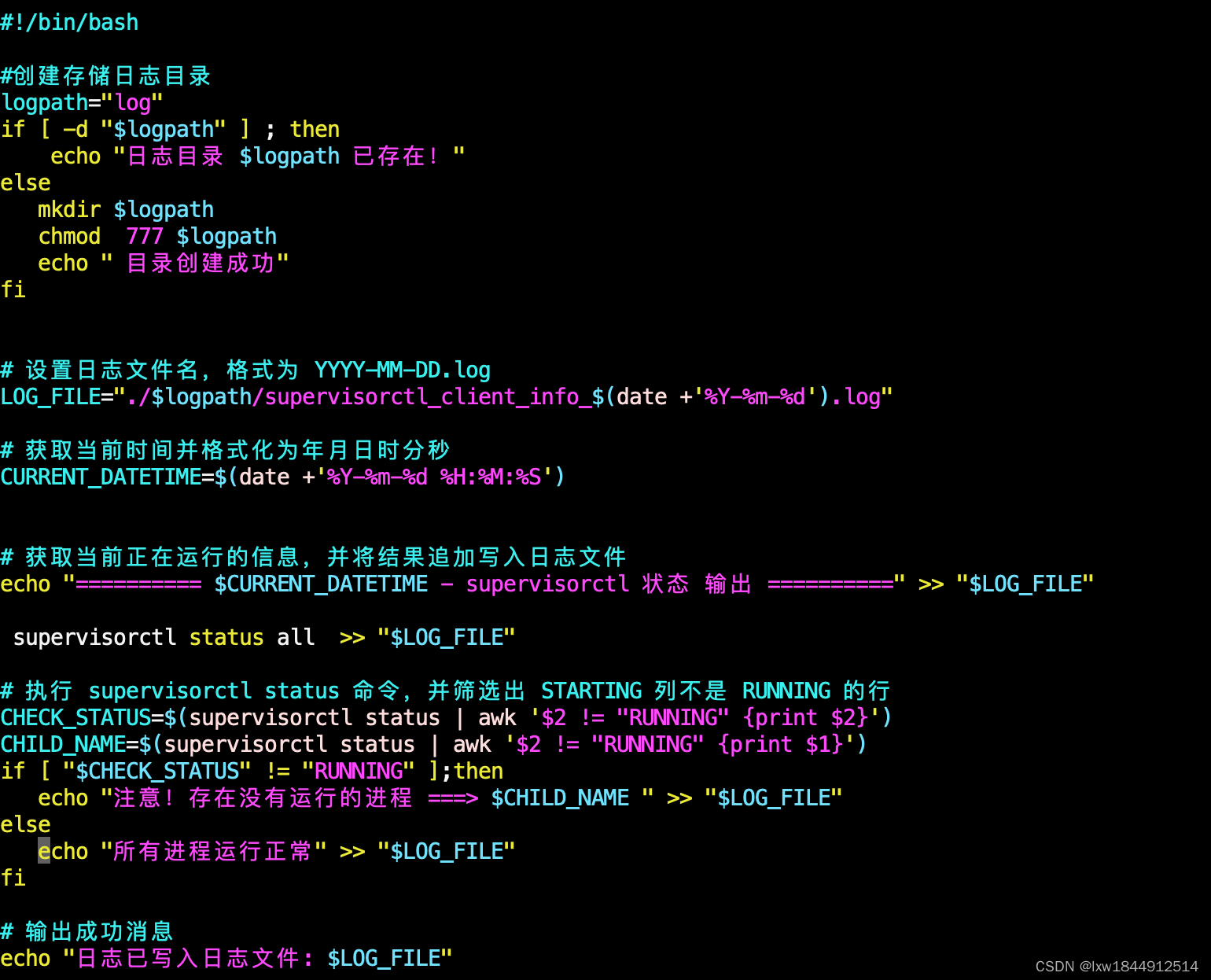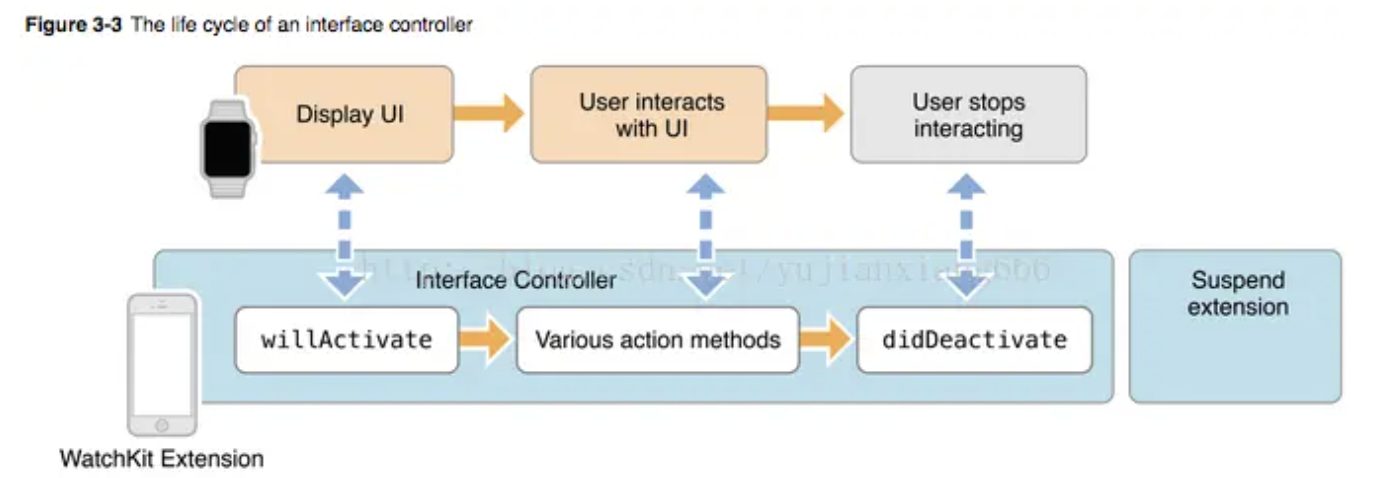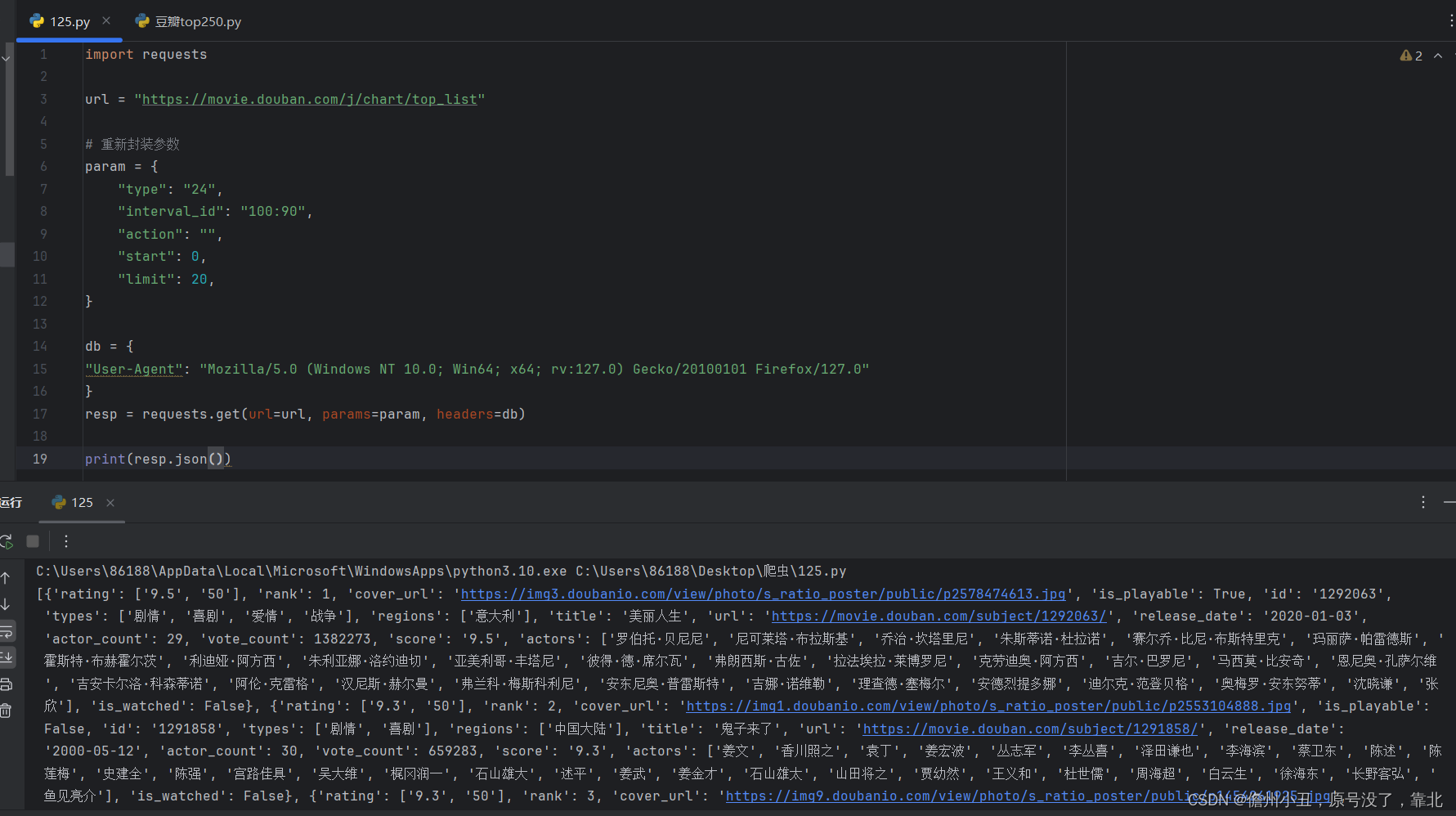1.环境
python 版本 3.9
2.训练数据集
本次采用LJSpeech数据集,百度网盘下载地址 链接:https://pan.baidu.com/s/1DDFmPpHQrTR_NvjAfwX-QA
提取码:1234
3.安装依赖
pip install TTS
4.工程结构

5代码部分
decoder.py
import torch
from torch import nn
from TTS.tts.layers.generic.normalization import ActNorm
from TTS.tts.layers.glow_tts.glow import CouplingBlock, InvConvNear
def squeeze(x, x_mask=None, num_sqz=2):
"""GlowTTS squeeze operation
Increase number of channels and reduce number of time steps
by the same factor.
Note:
each 's' is a n-dimensional vector.
``[s1,s2,s3,s4,s5,s6] --> [[s1, s3, s5], [s2, s4, s6]]``
"""
b, c, t = x.size()
t = (t // num_sqz) * num_sqz
x = x[:, :, :t]
x_sqz = x.view(b, c, t // num_sqz, num_sqz)
x_sqz = x_sqz.permute(0, 3, 1, 2).contiguous().view(b, c * num_sqz, t // num_sqz)
if x_mask is not None:
x_mask = x_mask[:, :, num_sqz - 1 :: num_sqz]
else:
x_mask = torch.ones(b, 1, t // num_sqz).to(device=x.device, dtype=x.dtype)
return x_sqz * x_mask, x_mask
def unsqueeze(x, x_mask=None, num_sqz=2):
"""GlowTTS unsqueeze operation (revert the squeeze)
Note:
each 's' is a n-dimensional vector.
``[[s1, s3, s5], [s2, s4, s6]] --> [[s1, s3, s5, s2, s4, s6]]``
"""
b, c, t = x.size()
x_unsqz = x.view(b, num_sqz, c // num_sqz, t)
x_unsqz = x_unsqz.permute(0, 2, 3, 1).contiguous().view(b, c // num_sqz, t * num_sqz)
if x_mask is not None:
x_mask = x_mask.unsqueeze(-1).repeat(1, 1, 1, num_sqz).view(b, 1, t * num_sqz)
else:
x_mask = torch.ones(b, 1, t * num_sqz).to(device=x.device, dtype=x.dtype)
return x_unsqz * x_mask, x_mask
class Decoder(nn.Module):
"""Stack of Glow Decoder Modules.
::
Squeeze -> ActNorm -> InvertibleConv1x1 -> AffineCoupling -> Unsqueeze
Args:
in_channels (int): channels of input tensor.
hidden_channels (int): hidden decoder channels.
kernel_size (int): Coupling block kernel size. (Wavenet filter kernel size.)
dilation_rate (int): rate to increase dilation by each layer in a decoder block.
num_flow_blocks (int): number of decoder blocks.
num_coupling_layers (int): number coupling layers. (number of wavenet layers.)
dropout_p (float): wavenet dropout rate.
sigmoid_scale (bool): enable/disable sigmoid scaling in coupling layer.
"""
def __init__(
self,
in_channels,
hidden_channels,
kernel_size,
dilation_rate,
num_flow_blocks,
num_coupling_layers,
dropout_p=0.0,
num_splits=4,
num_squeeze=2,
sigmoid_scale=False,
c_in_channels=0,
):
super().__init__()
self.in_channels = in_channels
self.hidden_channels = hidden_channels
self.kernel_size = kernel_size
self.dilation_rate = dilation_rate
self.num_flow_blocks = num_flow_blocks
self.num_coupling_layers = num_coupling_layers
self.dropout_p = dropout_p
self.num_splits = num_splits
self.num_squeeze = num_squeeze
self.sigmoid_scale = sigmoid_scale
self.c_in_channels = c_in_channels
self.flows = nn.ModuleList()
for _ in range(num_flow_blocks):
self.flows.append(ActNorm(channels=in_channels * num_squeeze))
self.flows.append(InvConvNear(channels=in_channels * num_squeeze, num_splits=num_splits))
self.flows.append(
CouplingBlock(
in_channels * num_squeeze,
hidden_channels,
kernel_size=kernel_size,
dilation_rate=dilation_rate,
num_layers=num_coupling_layers,
c_in_channels=c_in_channels,
dropout_p=dropout_p,
sigmoid_scale=sigmoid_scale,
)
)
def forward(self, x, x_mask, g=None, reverse=False):
"""
Shapes:
- x: :math:`[B, C, T]`
- x_mask: :math:`[B, 1 ,T]`
- g: :math:`[B, C]`
"""
if not reverse:
flows = self.flows
logdet_tot = 0
else:
flows = reversed(self.flows)
logdet_tot = None
if self.num_squeeze > 1:
x, x_mask = squeeze(x, x_mask, self.num_squeeze)
for f in flows:
if not reverse:
x, logdet = f(x, x_mask, g=g, reverse=reverse)
logdet_tot += logdet
else:
x, logdet = f(x, x_mask, g=g, reverse=reverse)
if self.num_squeeze > 1:
x, x_mask = unsqueeze(x, x_mask, self.num_squeeze)
return x, logdet_tot
def store_inverse(self):
for f in self.flows:
f.store_inverse()
encoder.py
import math
import torch
from torch import nn
from TTS.tts.layers.generic.gated_conv import GatedConvBlock
from TTS.tts.layers.generic.res_conv_bn import ResidualConv1dBNBlock
from TTS.tts.layers.generic.time_depth_sep_conv import TimeDepthSeparableConvBlock
from TTS.tts.layers.glow_tts.duration_predictor import DurationPredictor
from TTS.tts.layers.glow_tts.glow import ResidualConv1dLayerNormBlock
from TTS.tts.layers.glow_tts.transformer import RelativePositionTransformer
from TTS.tts.utils.helpers import sequence_mask
class Encoder(nn.Module):
"""Glow-TTS encoder module.
::
embedding -> <prenet> -> encoder_module -> <postnet> --> proj_mean
|
|-> proj_var
|
|-> concat -> duration_predictor
↑
speaker_embed
Args:
num_chars (int): number of characters.
out_channels (int): number of output channels.
hidden_channels (int): encoder's embedding size.
hidden_channels_ffn (int): transformer's feed-forward channels.
kernel_size (int): kernel size for conv layers and duration predictor.
dropout_p (float): dropout rate for any dropout layer.
mean_only (bool): if True, output only mean values and use constant std.
use_prenet (bool): if True, use pre-convolutional layers before transformer layers.
c_in_channels (int): number of channels in conditional input.
Shapes:
- input: (B, T, C)
::
suggested encoder params...
for encoder_type == 'rel_pos_transformer'
encoder_params={
'kernel_size':3,
'dropout_p': 0.1,
'num_layers': 6,
'num_heads': 2,
'hidden_channels_ffn': 768, # 4 times the hidden_channels
'input_length': None
}
for encoder_type == 'gated_conv'
encoder_params={
'kernel_size':5,
'dropout_p': 0.1,
'num_layers': 9,
}
for encoder_type == 'residual_conv_bn'
encoder_params={
"kernel_size": 4,
"dilations": [1, 2, 4, 1, 2, 4, 1, 2, 4, 1, 2, 4, 1],
"num_conv_blocks": 2,
"num_res_blocks": 13
}
for encoder_type == 'time_depth_separable'
encoder_params={
"kernel_size": 5,
'num_layers': 9,
}
"""
def __init__(
self,
num_chars,
out_channels,
hidden_channels,
hidden_channels_dp,
encoder_type,
encoder_params,
dropout_p_dp=0.1,
mean_only=False,
use_prenet=True,
c_in_channels=0,
):
super().__init__()
# class arguments
self.num_chars = num_chars
self.out_channels = out_channels
self.hidden_channels = hidden_channels
self.hidden_channels_dp = hidden_channels_dp
self.dropout_p_dp = dropout_p_dp
self.mean_only = mean_only
self.use_prenet = use_prenet
self.c_in_channels = c_in_channels
self.encoder_type = encoder_type
# embedding layer
self.emb = nn.Embedding(num_chars, hidden_channels)
nn.init.normal_(self.emb.weight, 0.0, hidden_channels**-0.5)
# init encoder module
if encoder_type.lower() == "rel_pos_transformer":
if use_prenet:
self.prenet = ResidualConv1dLayerNormBlock(
hidden_channels, hidden_channels, hidden_channels, kernel_size=5, num_layers=3, dropout_p=0.5
)
self.encoder = RelativePositionTransformer(
hidden_channels, hidden_channels, hidden_channels, **encoder_params
)
elif encoder_type.lower() == "gated_conv":
self.encoder = GatedConvBlock(hidden_channels, **encoder_params)
elif encoder_type.lower() == "residual_conv_bn":
if use_prenet:
self.prenet = nn.Sequential(nn.Conv1d(hidden_channels, hidden_channels, 1), nn.ReLU())
self.encoder = ResidualConv1dBNBlock(hidden_channels, hidden_channels, hidden_channels, **encoder_params)
self.postnet = nn.Sequential(
nn.Conv1d(self.hidden_channels, self.hidden_channels, 1), nn.BatchNorm1d(self.hidden_channels)
)
elif encoder_type.lower() == "time_depth_separable":
if use_prenet:
self.prenet = ResidualConv1dLayerNormBlock(
hidden_channels, hidden_channels, hidden_channels, kernel_size=5, num_layers=3, dropout_p=0.5
)
self.encoder = TimeDepthSeparableConvBlock(
hidden_channels, hidden_channels, hidden_channels, **encoder_params
)
else:
raise ValueError(" [!] Unkown encoder type.")
# final projection layers
self.proj_m = nn.Conv1d(hidden_channels, out_channels, 1)
if not mean_only:
self.proj_s = nn.Conv1d(hidden_channels, out_channels, 1)
# duration predictor
self.duration_predictor = DurationPredictor(
hidden_channels + c_in_channels, hidden_channels_dp, 3, dropout_p_dp
)
def forward(self, x, x_lengths, g=None):
"""
Shapes:
- x: :math:`[B, C, T]`
- x_lengths: :math:`[B]`
- g (optional): :math:`[B, 1, T]`
"""
# embedding layer
# [B ,T, D]
x = self.emb(x) * math.sqrt(self.hidden_channels)
# [B, D, T]
x = torch.transpose(x, 1, -1)
# compute input sequence mask
x_mask = torch.unsqueeze(sequence_mask(x_lengths, x.size(2)), 1).to(x.dtype)
# prenet
if hasattr(self, "prenet") and self.use_prenet:
x = self.prenet(x, x_mask)
# encoder
x = self.encoder(x, x_mask)
# postnet
if hasattr(self, "postnet"):
x = self.postnet(x) * x_mask
# set duration predictor input
if g is not None:
g_exp = g.expand(-1, -1, x.size(-1))
x_dp = torch.cat([x.detach(), g_exp], 1)
else:
x_dp = x.detach()
# final projection layer
x_m = self.proj_m(x) * x_mask
if not self.mean_only:
x_logs = self.proj_s(x) * x_mask
else:
x_logs = torch.zeros_like(x_m)
# duration predictor
logw = self.duration_predictor(x_dp, x_mask)
return x_m, x_logs, logw, x_mask
glow_tts.py
import math
from typing import Dict, List, Tuple, Union
import torch
from coqpit import Coqpit
from torch import nn
from torch.cuda.amp.autocast_mode import autocast
from torch.nn import functional as F
from TTS.tts.configs.glow_tts_config import GlowTTSConfig
from decoder import Decoder
from encoder import Encoder
from TTS.tts.models.base_tts import BaseTTS
from TTS.tts.utils.helpers import generate_path, maximum_path, sequence_mask
from TTS.tts.utils.speakers import SpeakerManager
from TTS.tts.utils.synthesis import synthesis
from TTS.tts.utils.text.tokenizer import TTSTokenizer
from TTS.tts.utils.visual import plot_alignment, plot_spectrogram
from TTS.utils.io import load_fsspec
class GlowTTS(BaseTTS):
"""GlowTTS model.
Paper::
https://arxiv.org/abs/2005.11129
Paper abstract::
Recently, text-to-speech (TTS) models such as FastSpeech and ParaNet have been proposed to generate
mel-spectrograms from text in parallel. Despite the advantage, the parallel TTS models cannot be trained
without guidance from autoregressive TTS models as their external aligners. In this work, we propose Glow-TTS,
a flow-based generative model for parallel TTS that does not require any external aligner. By combining the
properties of flows and dynamic programming, the proposed model searches for the most probable monotonic
alignment between text and the latent representation of speech on its own. We demonstrate that enforcing hard
monotonic alignments enables robust TTS, which generalizes to long utterances, and employing generative flows
enables fast, diverse, and controllable speech synthesis. Glow-TTS obtains an order-of-magnitude speed-up over
the autoregressive model, Tacotron 2, at synthesis with comparable speech quality. We further show that our
model can be easily extended to a multi-speaker setting.
Check :class:`TTS.tts.configs.glow_tts_config.GlowTTSConfig` for class arguments.
Examples:
Init only model layers.
>>> from TTS.tts.configs.glow_tts_config import GlowTTSConfig
>>> from TTS.tts.models.glow_tts import GlowTTS
>>> config = GlowTTSConfig(num_chars=2)
>>> model = GlowTTS(config)
Fully init a model ready for action. All the class attributes and class members
(e.g Tokenizer, AudioProcessor, etc.). are initialized internally based on config values.
>>> from TTS.tts.configs.glow_tts_config import GlowTTSConfig
>>> from TTS.tts.models.glow_tts import GlowTTS
>>> config = GlowTTSConfig()
>>> model = GlowTTS.init_from_config(config, verbose=False)
"""
def __init__(
self,
config: GlowTTSConfig,
ap: "AudioProcessor" = None,
tokenizer: "TTSTokenizer" = None,
speaker_manager: SpeakerManager = None,
):
super().__init__(config, ap, tokenizer, speaker_manager)
# pass all config fields to `self`
# for fewer code change
self.config = config
for key in config:
setattr(self, key, config[key])
self.decoder_output_dim = config.out_channels
# init multi-speaker layers if necessary
self.init_multispeaker(config)
self.run_data_dep_init = config.data_dep_init_steps > 0
self.encoder = Encoder(
self.num_chars,
out_channels=self.out_channels,
hidden_channels=self.hidden_channels_enc,
hidden_channels_dp=self.hidden_channels_dp,
encoder_type=self.encoder_type,
encoder_params=self.encoder_params,
mean_only=self.mean_only,
use_prenet=self.use_encoder_prenet,
dropout_p_dp=self.dropout_p_dp,
c_in_channels=self.c_in_channels,
)
self.decoder = Decoder(
self.out_channels,
self.hidden_channels_dec,
self.kernel_size_dec,
self.dilation_rate,
self.num_flow_blocks_dec,
self.num_block_layers,
dropout_p=self.dropout_p_dec,
num_splits=self.num_splits,
num_squeeze=self.num_squeeze,
sigmoid_scale=self.sigmoid_scale,
c_in_channels=self.c_in_channels,
)
def init_multispeaker(self, config: Coqpit):
"""Init speaker embedding layer if `use_speaker_embedding` is True and set the expected speaker embedding
vector dimension to the encoder layer channel size. If model uses d-vectors, then it only sets
speaker embedding vector dimension to the d-vector dimension from the config.
Args:
config (Coqpit): Model configuration.
"""
self.embedded_speaker_dim = 0
# set number of speakers - if num_speakers is set in config, use it, otherwise use speaker_manager
if self.speaker_manager is not None:
self.num_speakers = self.speaker_manager.num_speakers
# set ultimate speaker embedding size
if config.use_d_vector_file:
self.embedded_speaker_dim = (
config.d_vector_dim if "d_vector_dim" in config and config.d_vector_dim is not None else 512
)
if self.speaker_manager is not None:
assert (
config.d_vector_dim == self.speaker_manager.embedding_dim
), " [!] d-vector dimension mismatch b/w config and speaker manager."
# init speaker embedding layer
if config.use_speaker_embedding and not config.use_d_vector_file:
print(" > Init speaker_embedding layer.")
self.embedded_speaker_dim = self.hidden_channels_enc
self.emb_g = nn.Embedding(self.num_speakers, self.hidden_channels_enc)
nn.init.uniform_(self.emb_g.weight, -0.1, 0.1)
# set conditioning dimensions
self.c_in_channels = self.embedded_speaker_dim
@staticmethod
def compute_outputs(attn, o_mean, o_log_scale, x_mask):
"""Compute and format the mode outputs with the given alignment map"""
y_mean = torch.matmul(attn.squeeze(1).transpose(1, 2), o_mean.transpose(1, 2)).transpose(
1, 2
) # [b, t', t], [b, t, d] -> [b, d, t']
y_log_scale = torch.matmul(attn.squeeze(1).transpose(1, 2), o_log_scale.transpose(1, 2)).transpose(
1, 2
) # [b, t', t], [b, t, d] -> [b, d, t']
# compute total duration with adjustment
o_attn_dur = torch.log(1 + torch.sum(attn, -1)) * x_mask
return y_mean, y_log_scale, o_attn_dur
def unlock_act_norm_layers(self):
"""Unlock activation normalization layers for data depended initalization."""
for f in self.decoder.flows:
if getattr(f, "set_ddi", False):
f.set_ddi(True)
def lock_act_norm_layers(self):
"""Lock activation normalization layers."""
for f in self.decoder.flows:
if getattr(f, "set_ddi", False):
f.set_ddi(False)
def _set_speaker_input(self, aux_input: Dict):
if aux_input is None:
d_vectors = None
speaker_ids = None
else:
d_vectors = aux_input.get("d_vectors", None)
speaker_ids = aux_input.get("speaker_ids", None)
if d_vectors is not None and speaker_ids is not None:
raise ValueError("[!] Cannot use d-vectors and speaker-ids together.")
if speaker_ids is not None and not hasattr(self, "emb_g"):
raise ValueError("[!] Cannot use speaker-ids without enabling speaker embedding.")
g = speaker_ids if speaker_ids is not None else d_vectors
return g
def _speaker_embedding(self, aux_input: Dict) -> Union[torch.tensor, None]:
g = self._set_speaker_input(aux_input)
# speaker embedding
if g is not None:
if hasattr(self, "emb_g"):
# use speaker embedding layer
if not g.size(): # if is a scalar
g = g.unsqueeze(0) # unsqueeze
g = F.normalize(self.emb_g(g)).unsqueeze(-1) # [b, h, 1]
else:
# use d-vector
g = F.normalize(g).unsqueeze(-1) # [b, h, 1]
return g
def forward(
self, x, x_lengths, y, y_lengths=None, aux_input={"d_vectors": None, "speaker_ids": None}
): # pylint: disable=dangerous-default-value
"""
Args:
x (torch.Tensor):
Input text sequence ids. :math:`[B, T_en]`
x_lengths (torch.Tensor):
Lengths of input text sequences. :math:`[B]`
y (torch.Tensor):
Target mel-spectrogram frames. :math:`[B, T_de, C_mel]`
y_lengths (torch.Tensor):
Lengths of target mel-spectrogram frames. :math:`[B]`
aux_input (Dict):
Auxiliary inputs. `d_vectors` is speaker embedding vectors for a multi-speaker model.
:math:`[B, D_vec]`. `speaker_ids` is speaker ids for a multi-speaker model usind speaker-embedding
layer. :math:`B`
Returns:
Dict:
- z: :math: `[B, T_de, C]`
- logdet: :math:`B`
- y_mean: :math:`[B, T_de, C]`
- y_log_scale: :math:`[B, T_de, C]`
- alignments: :math:`[B, T_en, T_de]`
- durations_log: :math:`[B, T_en, 1]`
- total_durations_log: :math:`[B, T_en, 1]`
"""
# [B, T, C] -> [B, C, T]
y = y.transpose(1, 2)
y_max_length = y.size(2)
# norm speaker embeddings
g = self._speaker_embedding(aux_input)
# embedding pass
o_mean, o_log_scale, o_dur_log, x_mask = self.encoder(x, x_lengths, g=g)
# drop redisual frames wrt num_squeeze and set y_lengths.
y, y_lengths, y_max_length, attn = self.preprocess(y, y_lengths, y_max_length, None)
# create masks
y_mask = torch.unsqueeze(sequence_mask(y_lengths, y_max_length), 1).to(x_mask.dtype)
# [B, 1, T_en, T_de]
attn_mask = torch.unsqueeze(x_mask, -1) * torch.unsqueeze(y_mask, 2)
# decoder pass
z, logdet = self.decoder(y, y_mask, g=g, reverse=False)
# find the alignment path
with torch.no_grad():
o_scale = torch.exp(-2 * o_log_scale)
logp1 = torch.sum(-0.5 * math.log(2 * math.pi) - o_log_scale, [1]).unsqueeze(-1) # [b, t, 1]
logp2 = torch.matmul(o_scale.transpose(1, 2), -0.5 * (z**2)) # [b, t, d] x [b, d, t'] = [b, t, t']
logp3 = torch.matmul((o_mean * o_scale).transpose(1, 2), z) # [b, t, d] x [b, d, t'] = [b, t, t']
logp4 = torch.sum(-0.5 * (o_mean**2) * o_scale, [1]).unsqueeze(-1) # [b, t, 1]
logp = logp1 + logp2 + logp3 + logp4 # [b, t, t']
attn = maximum_path(logp, attn_mask.squeeze(1)).unsqueeze(1).detach()
y_mean, y_log_scale, o_attn_dur = self.compute_outputs(attn, o_mean, o_log_scale, x_mask)
attn = attn.squeeze(1).permute(0, 2, 1)
outputs = {
"z": z.transpose(1, 2),
"logdet": logdet,
"y_mean": y_mean.transpose(1, 2),
"y_log_scale": y_log_scale.transpose(1, 2),
"alignments": attn,
"durations_log": o_dur_log.transpose(1, 2),
"total_durations_log": o_attn_dur.transpose(1, 2),
}
return outputs
@torch.no_grad()
def inference_with_MAS(
self, x, x_lengths, y=None, y_lengths=None, aux_input={"d_vectors": None, "speaker_ids": None}
): # pylint: disable=dangerous-default-value
"""
It's similar to the teacher forcing in Tacotron.
It was proposed in: https://arxiv.org/abs/2104.05557
Shapes:
- x: :math:`[B, T]`
- x_lenghts: :math:`B`
- y: :math:`[B, T, C]`
- y_lengths: :math:`B`
- g: :math:`[B, C] or B`
"""
y = y.transpose(1, 2)
y_max_length = y.size(2)
# norm speaker embeddings
g = self._speaker_embedding(aux_input)
# embedding pass
o_mean, o_log_scale, o_dur_log, x_mask = self.encoder(x, x_lengths, g=g)
# drop redisual frames wrt num_squeeze and set y_lengths.
y, y_lengths, y_max_length, attn = self.preprocess(y, y_lengths, y_max_length, None)
# create masks
y_mask = torch.unsqueeze(sequence_mask(y_lengths, y_max_length), 1).to(x_mask.dtype)
attn_mask = torch.unsqueeze(x_mask, -1) * torch.unsqueeze(y_mask, 2)
# decoder pass
z, logdet = self.decoder(y, y_mask, g=g, reverse=False)
# find the alignment path between z and encoder output
o_scale = torch.exp(-2 * o_log_scale)
logp1 = torch.sum(-0.5 * math.log(2 * math.pi) - o_log_scale, [1]).unsqueeze(-1) # [b, t, 1]
logp2 = torch.matmul(o_scale.transpose(1, 2), -0.5 * (z**2)) # [b, t, d] x [b, d, t'] = [b, t, t']
logp3 = torch.matmul((o_mean * o_scale).transpose(1, 2), z) # [b, t, d] x [b, d, t'] = [b, t, t']
logp4 = torch.sum(-0.5 * (o_mean**2) * o_scale, [1]).unsqueeze(-1) # [b, t, 1]
logp = logp1 + logp2 + logp3 + logp4 # [b, t, t']
attn = maximum_path(logp, attn_mask.squeeze(1)).unsqueeze(1).detach()
y_mean, y_log_scale, o_attn_dur = self.compute_outputs(attn, o_mean, o_log_scale, x_mask)
attn = attn.squeeze(1).permute(0, 2, 1)
# get predited aligned distribution
z = y_mean * y_mask
# reverse the decoder and predict using the aligned distribution
y, logdet = self.decoder(z, y_mask, g=g, reverse=True)
outputs = {
"model_outputs": z.transpose(1, 2),
"logdet": logdet,
"y_mean": y_mean.transpose(1, 2),
"y_log_scale": y_log_scale.transpose(1, 2),
"alignments": attn,
"durations_log": o_dur_log.transpose(1, 2),
"total_durations_log": o_attn_dur.transpose(1, 2),
}
return outputs
@torch.no_grad()
def decoder_inference(
self, y, y_lengths=None, aux_input={"d_vectors": None, "speaker_ids": None}
): # pylint: disable=dangerous-default-value
"""
Shapes:
- y: :math:`[B, T, C]`
- y_lengths: :math:`B`
- g: :math:`[B, C] or B`
"""
y = y.transpose(1, 2)
y_max_length = y.size(2)
g = self._speaker_embedding(aux_input)
y_mask = torch.unsqueeze(sequence_mask(y_lengths, y_max_length), 1).to(y.dtype)
# decoder pass
z, logdet = self.decoder(y, y_mask, g=g, reverse=False)
# reverse decoder and predict
y, logdet = self.decoder(z, y_mask, g=g, reverse=True)
outputs = {}
outputs["model_outputs"] = y.transpose(1, 2)
outputs["logdet"] = logdet
return outputs
@torch.no_grad()
def inference(
self, x, aux_input={"x_lengths": None, "d_vectors": None, "speaker_ids": None}
): # pylint: disable=dangerous-default-value
x_lengths = aux_input["x_lengths"]
g = self._speaker_embedding(aux_input)
# embedding pass
o_mean, o_log_scale, o_dur_log, x_mask = self.encoder(x, x_lengths, g=g)
# compute output durations
w = (torch.exp(o_dur_log) - 1) * x_mask * self.length_scale
w_ceil = torch.clamp_min(torch.ceil(w), 1)
y_lengths = torch.clamp_min(torch.sum(w_ceil, [1, 2]), 1).long()
y_max_length = None
# compute masks
y_mask = torch.unsqueeze(sequence_mask(y_lengths, y_max_length), 1).to(x_mask.dtype)
attn_mask = torch.unsqueeze(x_mask, -1) * torch.unsqueeze(y_mask, 2)
# compute attention mask
attn = generate_path(w_ceil.squeeze(1), attn_mask.squeeze(1)).unsqueeze(1)
y_mean, y_log_scale, o_attn_dur = self.compute_outputs(attn, o_mean, o_log_scale, x_mask)
z = (y_mean + torch.exp(y_log_scale) * torch.randn_like(y_mean) * self.inference_noise_scale) * y_mask
# decoder pass
y, logdet = self.decoder(z, y_mask, g=g, reverse=True)
attn = attn.squeeze(1).permute(0, 2, 1)
outputs = {
"model_outputs": y.transpose(1, 2),
"logdet": logdet,
"y_mean": y_mean.transpose(1, 2),
"y_log_scale": y_log_scale.transpose(1, 2),
"alignments": attn,
"durations_log": o_dur_log.transpose(1, 2),
"total_durations_log": o_attn_dur.transpose(1, 2),
}
return outputs
def train_step(self, batch: dict, criterion: nn.Module):
"""A single training step. Forward pass and loss computation. Run data depended initialization for the
first `config.data_dep_init_steps` steps.
Args:
batch (dict): [description]
criterion (nn.Module): [description]
"""
text_input = batch["text_input"]
text_lengths = batch["text_lengths"]
mel_input = batch["mel_input"]
mel_lengths = batch["mel_lengths"]
d_vectors = batch["d_vectors"]
speaker_ids = batch["speaker_ids"]
if self.run_data_dep_init and self.training:
# compute data-dependent initialization of activation norm layers
self.unlock_act_norm_layers()
with torch.no_grad():
_ = self.forward(
text_input,
text_lengths,
mel_input,
mel_lengths,
aux_input={"d_vectors": d_vectors, "speaker_ids": speaker_ids},
)
outputs = None
loss_dict = None
self.lock_act_norm_layers()
else:
# normal training step
outputs = self.forward(
text_input,
text_lengths,
mel_input,
mel_lengths,
aux_input={"d_vectors": d_vectors, "speaker_ids": speaker_ids},
)
with autocast(enabled=False): # avoid mixed_precision in criterion
loss_dict = criterion(
outputs["z"].float(),
outputs["y_mean"].float(),
outputs["y_log_scale"].float(),
outputs["logdet"].float(),
mel_lengths,
outputs["durations_log"].float(),
outputs["total_durations_log"].float(),
text_lengths,
)
return outputs, loss_dict
def _create_logs(self, batch, outputs, ap):
alignments = outputs["alignments"]
text_input = batch["text_input"][:1] if batch["text_input"] is not None else None
text_lengths = batch["text_lengths"]
mel_input = batch["mel_input"]
d_vectors = batch["d_vectors"][:1] if batch["d_vectors"] is not None else None
speaker_ids = batch["speaker_ids"][:1] if batch["speaker_ids"] is not None else None
# model runs reverse flow to predict spectrograms
pred_outputs = self.inference(
text_input,
aux_input={"x_lengths": text_lengths[:1], "d_vectors": d_vectors, "speaker_ids": speaker_ids},
)
model_outputs = pred_outputs["model_outputs"]
pred_spec = model_outputs[0].data.cpu().numpy()
gt_spec = mel_input[0].data.cpu().numpy()
align_img = alignments[0].data.cpu().numpy()
figures = {
"prediction": plot_spectrogram(pred_spec, ap, output_fig=False),
"ground_truth": plot_spectrogram(gt_spec, ap, output_fig=False),
"alignment": plot_alignment(align_img, output_fig=False),
}
# Sample audio
train_audio = ap.inv_melspectrogram(pred_spec.T)
return figures, {"audio": train_audio}
def train_log(
self, batch: dict, outputs: dict, logger: "Logger", assets: dict, steps: int
) -> None: # pylint: disable=no-self-use
figures, audios = self._create_logs(batch, outputs, self.ap)
logger.train_figures(steps, figures)
logger.train_audios(steps, audios, self.ap.sample_rate)
@torch.no_grad()
def eval_step(self, batch: dict, criterion: nn.Module):
return self.train_step(batch, criterion)
def eval_log(self, batch: dict, outputs: dict, logger: "Logger", assets: dict, steps: int) -> None:
figures, audios = self._create_logs(batch, outputs, self.ap)
logger.eval_figures(steps, figures)
logger.eval_audios(steps, audios, self.ap.sample_rate)
@torch.no_grad()
def test_run(self, assets: Dict) -> Tuple[Dict, Dict]:
"""Generic test run for `tts` models used by `Trainer`.
You can override this for a different behaviour.
Returns:
Tuple[Dict, Dict]: Test figures and audios to be projected to Tensorboard.
"""
print(" | > Synthesizing test sentences.")
test_audios = {}
test_figures = {}
test_sentences = self.config.test_sentences
aux_inputs = self._get_test_aux_input()
if len(test_sentences) == 0:
print(" | [!] No test sentences provided.")
else:
for idx, sen in enumerate(test_sentences):
outputs = synthesis(
self,
sen,
self.config,
"cuda" in str(next(self.parameters()).device),
speaker_id=aux_inputs["speaker_id"],
d_vector=aux_inputs["d_vector"],
style_wav=aux_inputs["style_wav"],
use_griffin_lim=True,
do_trim_silence=False,
)
test_audios["{}-audio".format(idx)] = outputs["wav"]
test_figures["{}-prediction".format(idx)] = plot_spectrogram(
outputs["outputs"]["model_outputs"], self.ap, output_fig=False
)
test_figures["{}-alignment".format(idx)] = plot_alignment(outputs["alignments"], output_fig=False)
return test_figures, test_audios
def preprocess(self, y, y_lengths, y_max_length, attn=None):
if y_max_length is not None:
y_max_length = (y_max_length // self.num_squeeze) * self.num_squeeze
y = y[:, :, :y_max_length]
if attn is not None:
attn = attn[:, :, :, :y_max_length]
y_lengths = torch.div(y_lengths, self.num_squeeze, rounding_mode="floor") * self.num_squeeze
return y, y_lengths, y_max_length, attn
def store_inverse(self):
self.decoder.store_inverse()
def load_checkpoint(
self, config, checkpoint_path, eval=False
): # pylint: disable=unused-argument, redefined-builtin
state = load_fsspec(checkpoint_path, map_location=torch.device("cpu"))
self.load_state_dict(state["model"])
if eval:
self.eval()
self.store_inverse()
assert not self.training
@staticmethod
def get_criterion():
from TTS.tts.layers.losses import GlowTTSLoss # pylint: disable=import-outside-toplevel
return GlowTTSLoss()
def on_train_step_start(self, trainer):
"""Decide on every training step wheter enable/disable data depended initialization."""
self.run_data_dep_init = trainer.total_steps_done < self.data_dep_init_steps
@staticmethod
def init_from_config(config: "GlowTTSConfig", samples: Union[List[List], List[Dict]] = None, verbose=True):
"""Initiate model from config
Args:
config (VitsConfig): Model config.
samples (Union[List[List], List[Dict]]): Training samples to parse speaker ids for training.
Defaults to None.
verbose (bool): If True, print init messages. Defaults to True.
"""
from TTS.utils.audio import AudioProcessor
ap = AudioProcessor.init_from_config(config, verbose)
tokenizer, new_config = TTSTokenizer.init_from_config(config)
speaker_manager = SpeakerManager.init_from_config(config, samples)
return GlowTTS(new_config, ap, tokenizer, speaker_manager)
train.py
from TTS.tts.configs.shared_configs import BaseDatasetConfig
from TTS.tts.configs.glow_tts_config import GlowTTSConfig
from TTS.utils.audio import AudioProcessor
from TTS.tts.utils.text.tokenizer import TTSTokenizer
from TTS.tts.datasets import load_tts_samples
import os
import numpy as np
import torch
from glow_tts import GlowTTS
from trainer import Trainer, TrainerArgs
from TTS.utils.radam import RAdam
from trainer.torch import NoamLR
from TTS.tts.layers.losses import GlowTTSLoss
def init_config():
dataset_config = BaseDatasetConfig(
path='train/LJSpeech-1.1/',
meta_file_train='metadata.csv',
formatter='ljspeech'
)
config = GlowTTSConfig(
batch_size=32,
eval_batch_size=16,
num_loader_workers=4,
num_eval_loader_workers=4,
run_eval=True,
test_delay_epochs=-1,
epochs=3,
text_cleaner='phoneme_cleaners',
use_phonemes=True,
phoneme_language='en-us',
phoneme_cache_path='train/phoneme_cache',
print_step=25,
print_eval=False,
mixed_precision=True,
output_path='train',
datasets=[dataset_config],
save_step=1000,
data_dep_init_steps=0,
)
processor = AudioProcessor.init_from_config(config)
tokenizer, config = TTSTokenizer.init_from_config(config)
datas, _ = load_tts_samples(
dataset_config,
eval_split=True,
eval_split_size=0.001
)
# 排序
lens = [os.path.getsize(i['audio_file']) for i in datas]
ids = np.argsort(lens)
datas = [datas[i] for i in ids]
return config, processor, tokenizer, datas
config, processor, tokenizer, datas = init_config()
out = processor.load_wav('train/LJSpeech-1.1/wavs/LJ001-0108.wav')
print('processor.load_wav=', out, out.shape)
out = tokenizer.text_to_ids(
'it is obvious that legibility is the first thing to be aimed at in the forms of the letters'
)
print('tokenizer.text_to_ids=', out, len(out))
out = processor.melspectrogram(
processor.load_wav('train/LJSpeech-1.1/wavs/LJ001-0108.wav'))
print('processor.melspectrogram=', out.shape)
len(datas), datas[:2]
def init_model(from_trainer):
model = GlowTTS(config, processor, tokenizer, speaker_manager=None)
model.run_data_dep_init = False
if from_trainer:
trainer = Trainer(args=TrainerArgs(),
config=config,
output_path='train',
model=model,
train_samples=datas,
eval_samples=None)
optimizer = trainer.get_optimizer(model, config)
scheduler = trainer.get_scheduler(model, config, optimizer)
criterion = trainer.get_criterion(model)
loader = trainer.get_train_dataloader({}, datas, verbose=True)
else:
optimizer = RAdam(model.parameters(),
lr=1e-3,
betas=[0.9, 0.998],
weight_decay=1e-6)
scheduler = NoamLR(optimizer, warmup_steps=4000)
criterion = GlowTTSLoss()
loader = model.get_data_loader(config=config,
assets={},
is_eval=False,
samples=datas,
verbose=True,
num_gpus=0)
return model, optimizer, scheduler, criterion, loader
model, optimizer, scheduler, criterion, loader = init_model(from_trainer=False)
# 统计参数量
print(sum(i.numel() for i in model.parameters()) / 10000)
#optimizer, scheduler, criterion, loader
def train():
global model
device = 'cuda' if torch.cuda.is_available() else 'cpu'
model.train()
model = model.to(device)
for epoch in range(config.epochs):
for i, data in enumerate(loader):
data = model.format_batch(data)
for k in data.keys():
if isinstance(data[k], torch.Tensor):
data[k] = data[k].to(device)
print("#############################################")
print(data['text_input'].shape)
print(data['mel_input'].shape)
print("====================================================")
_, loss_dict = model.train_step(data, criterion)
model.zero_grad(set_to_none=True)
loss_dict['loss'].backward()
torch.nn.utils.clip_grad_norm_(model.parameters(), 5)
optimizer.step()
optimizer.zero_grad(set_to_none=True)
if i % 2 == 0:
lr = optimizer.state_dict()['param_groups'][0]['lr']
print(epoch, i, loss_dict['loss'].item(), lr)
scheduler.step()
config.save_json('train/config.json')
model = model.cpu()
torch.save({
'config': config.to_dict(),
'model': model.state_dict()
}, 'train/model.pth')
if __name__ == '__main__':
train()
其中train.py是训练TTS模型的入口,训练好的模型保存在train文件夹下




